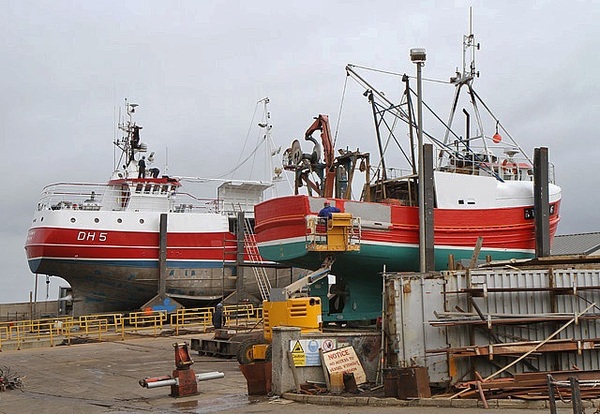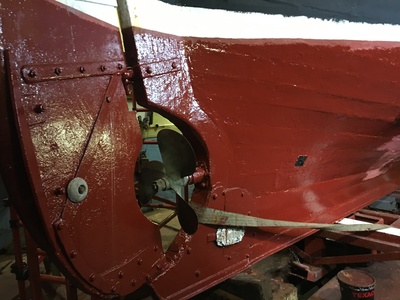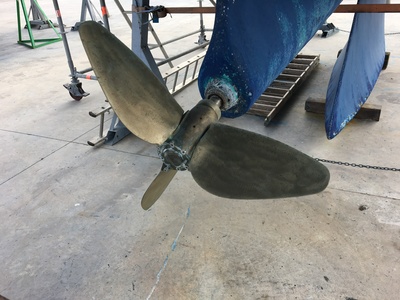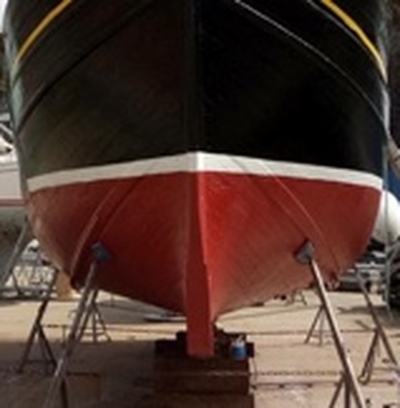
View all banners
FAFB will never call you and ask for your credit card details over the phone. If this happens, hang up!


Whatever size, make or model you have, owning a boat comes with some routine maintenance requirements. The more often your boat is in use, the more wear and tear or accidental damage can occur so it is essential that you don’t put these important jobs off for another day. Likewise, if your boat has been enjoying winter under cover, it’s recommended that you perform some basic maintenance and safety checks before you take it back out to sea.
Some of these regular jobs might not apply to you and owners of other boats may find that their list also includes some other tasks that need to be undertaken. This is particularly true for fishing, or other commercial, boat owners.
The bottom line is, owning a boat is an investment and some simple, but regular, maintenance is just another way of protecting your cash.
Image of Fishing boat maintenance at Macduff Shipyards via Geograph.
The first job is to inspect the system for damage and any obvious leaks. It is important to pay particular attention to connections in the fuel hoses as well as the tank surfaces.
The first sign of a damaged fuel hose can include cracking as well as being quite brittle, overly stiff or very soft.
Where you find any damaged components, make sure these are replaced before using the boat again and double check that all clamps and fittings have been tightly secured.
Check that the tanks itself is free from contaminants and rust and that it is securely seated in a locked position.
Next, check that the exhaust and ventilation systems are all functioning correctly by running some visual diagnostics. Look for any kinks, bulges, chafing and corrosion and then check that the connections are all secure. The two prime places for leaks and corrosion in the exhaust system are around the engine manifold and the exhaust elbow joints.
Pay close attention to these areas and make sure you look underneath any lagging (make sure the system is cool before performing this test). It is recommended that you perform a visual check when the engine is not-running as well as when it is not running as some leaks can only be detected when the system is in use.
Lastly, make sure the engine compartment or area surrounding your outboard is clear of any debris including flammable materials, oily rags and such like.
You can find some more detailed information about routine diesel engine maintenance in one of previously published articles, here
Just like in a car, boat engines need to have a regular oil change; whether this is a simple four-stroke outboard or an inboard engine
The frequency of this will vary by engine model but should be at least once a year or for every 100 hours of operation.
Oil changes are often quite easy and can be performed relatively simply as long as you have the right tools.
In most engines, you can use (or borrow) an oil extractor pump and you should be able to remove the oil through the dipstick tube. However, some engines come equipped with their own drain mechanism including those that have drain tubes which bypass the bilge. Check the maintenance requirements of your engine model and follow the instructions. Alternatively, many harbours can offer the services of their engineers who can perform an oil change for you.
When replacing the oil in your engine, make sure you select the correct marine-grade oil and do not use standard automotive oil.
Lastly, ensure that your oil filter and drive lubricants are changed in accordance with the manufacturer’s recommendations.
Along with the fuel system and exhaust system, check all other cables and hoses as well as drive belts for signs of deterioration. Any that have become brittle or show obvious signs of damage should be replaced.
Belts should not be loose and must fit snugly around pulleys to avoid them slipping whilst in use. Look for signs of wearing such as black residue around the pulley.
Pay close attention to the throttle jacket and steering control cables for signs of cracking or swelling as this can indicate internal corrosion which can be extremely dangerous if left unattended to.
Whist it is important that your boat’s electrical system is regularly inspected and tested by a qualified marine electrician, you can perform your own visual checks on the component parts. However, you should always ensure that the battery is disconnected before doing so.
Inspect the connections for signs of corrosion and ensure that these are all clean and tight.
Any corroded terminals (and cable connections) can be cleaned using a wire brush.
Regularly check that your battery is charged and, just as importantly, can hold this charge.
You should check all fluid levels regularly which should include (but is not limited to) the coolant, power trim reservoirs, power steering and engine oil.
Make sure that you regularly inspect propellers for cracks, dings, pitting or any kind of distorted that could cause damage to the drive train.
The propeller should also be checked to ensure that is securely fixed.
Don’t forget to replace bearings regularly.
Even the tiniest nick , dent or pitting in your propeller can make a boat less efficient in the water which can add to your fuel costs. Damaged props are also notorious for increasing vibration which can place a great deal of extra stress on seals and bearings which can be far more expensive to fix.
We've covered some essential maintenance tips for propellers in a previous guide which you can find here.


It’s not easy to inspect the hull when the boat is in the water so this may have to wait until you are in dry dock or, with larger vessels that are infrequently out of the water, arrange for an underwater survey.
When inspecting the hull, you are looking for visual signs of damage and distortion such as blistering, swelling and cracks.
When the hull is out of the water, take this opportunity to give it a good clean using a non-toxic, marine friendly cleaning solution. Whilst you are at it, give the topsides and deck a good once over too.
If necessary, and whilst the boat is out of the water, now might be a good time to consider applying some anti-fouling

You should ensure that you have the requisite number of anchors on-board and that these are adequate for both your vessel and the bottom conditions in which you will be operating them.
Check that the tackle is secured properly and that it can be easily (and safely) stowed when not in use.
Check the length of chain at anchor and give all the major components a visual check for abrasion and wear.
A part of regular maintenance checks that is often overlooked, particularly aboard non-commercial vessels that may not be subject to routine inspections, is safety equipment.
Take the time to regularly check the condition of all life jackets in use and ensure there are enough for all crew and any passengers. These should all be the correct size for the individual.
You should have a working and tested carbon monoxide detector in any enclosed (or semi-enclosed) area of your boat.
You should also have on-board fire extinguishers of the correct class and quantity appropriate for your type of vessel. These should be safely and securely stowed with the correct signage and regularly inspected to ensure they are in fully charged. It is important that you and your crew are familiar with how to operate these devices.
If you have an EPIRB for distress situations then you should include this in your regular systems check to ensure that it is fully charged and ready to be deployed if necessary.
It is recommended that you include the following checks within your regular inspections:
And finally, remember that preventive boat motor maintenance is not only essential to help prevent further and more costly damage to your vessel but is also a necessary way to keep you and your crew safe whilst at sea. It is far easier to stay ahead of these maintenance tasks whilst in dry dock or close to land than trying to deal with remedial repairs whilst out at sea.
For help with the routine maintenance of your vessel including engineering specialists, mechanics, equipment hire and spares, Find a Fishing Boat has an excellent directory of services in your area. You can find full details of all our advertisers via the 'Equipment and Services' tab.